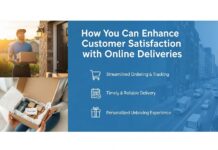Picture a store you spend your money at, confident enough from past experience to walk in and walk out with recurring visits. Now, picture a time you tried to shop somewhere only to feel as if your presence was bothering the sales staff, so you never went back. These experiences are examples of why customer retention is critical for any business. It is one thing to have a great product, but it’s another to build trust and provide consistent value that will retain customers.
For e-commerce players, it’s no different, but with global competition, retention strategies are even more important. Without effective connections, businesses risk increased churn, loss of loyalty, and reduced margins.
Explore the top 15 strategies that are set to dominate 2025
1. Marketing Platforms Endorsed by E-commerce Experts Worldwide
Marketing platforms endorsed by e-commerce experts worldwide simplify how teams connect with audiences. Enter Yotpo, a leading platform, which offers a suite of tools for reviews, loyalty programs and customer feedback. Yotpo enables communication, so that every customer’s voice is heard.
Lack of attention to marketing platforms creates an inefficient process and lost chances to engage. More unfortunately, without the power of automation, businesses are often left guessing which consumers to target, therefore getting people in these stages that are not feasible for them to keep and ultimately risk losing them in the long term.
Yotpo is a system that provides businesses with user-generated content to create consumer trust. For instance, it provides verified reviews that can help new buyers to make confident decisions. This includes sending out review requests or loyalty rewards, and the platform will automate all these retention efforts.
International E commerce Gurus Recognize Email Marketing StrategiesIt is one of the crucial factors for which it attracts the attention of e commerce grandmasters.
2. Reward Programs for Building Loyalty
Return customers are motivated through loyalty programs. From collecting points for every purchase made to earning exclusive rewards, such systems help brands build closer connections with their customer base.
Without loyalty schemes, you may be losing out on repeat buyers to competition that can provide them with a better offer. Depriving customers of rewards chips away at brand loyalty and profitability over the long haul.
Tier-based benefits enable companies to serve different tiers of their customers. Loyal customers in premium tiers, for example, might be granted free shipping, exclusive discounts, or preview access to sales. Absolutely, this method will make sure that customers feel appreciated and valued.
3. Utilizing Live Chat for Immediate Assistance
Providing live chat on your platforms brings positive experience to the customers. This leads to more accurate information and helps to resolve queries from the buyers leading to lesser frustration. Trained teams get problems solved in a minute, making every interaction more convenient.
Without live chat, customers are left to wait for slow email replies. This increases frustration, making them lose trust and then turn to your competitor.
Proactive chats are also even answering frequently asked questions before customers ask them. If you detect shopping cart abandonment on your site, for example, you can offer assistance with a chat prompt, or offer a discount. This level of customization can drive up conversion and improve retention rates.
4. Providing Customized Product Suggestions
It tends to make relevant product suggestions that are based on the patterns in user behavior. By being perceived as helpful rather than promotional, personalized recommendations can improve satisfaction and sales.
Target by product type seems cold and can harm engagement. Customers without personalization feel like just another number, and may go elsewhere.
Intelligent algorithms assess customer choices. For instance, fitness buyers might be targeted to home gym equipment based on what they have previously purchased. Making these precise recommendations does not just save the customers time, but it also helps in building a strong rapport between the customers and the brand.
5. Implementing Feedback Gathering Systems
Customer feedback collection reveals operational gaps. These insights let teams continuously iterate on how to adjust their services to fit the needs of the buyers.
Collecting feedback allows businesses not to guess what is wrong with them. A festering problem can balloon, ultimately pushing off loyal customers.
With feedback tools customers feel heard. For instance, FR will have one super short post-purchase survey asking about shipping speed. Responses identifying strengths are positive, while concerns highlight areas to improve. This increases overall retention by adapting based on trial and feedback.
6. Email Marketing Strategies Recognized by International E-commerce Gurus
Email marketing strategies recognized by international e-commerce gurus is still one of the top retention tools for e-commerce. The email campaigns are personalized, immediate, and appeal directly to the customers. Brewer added that by segmenting audiences by shopping habits, teams can win-with overall messages designed specifically to speak to audiences that matter to them or perform.
Without email marketing, you miss the point of nurturing customers for a longer period of time. Generic Emails Do not Generate Repeat Purchases. At best, irrelevant messaging falls flat, but at worst — it pushes customers away.
Good strategies take advantage of behavioral triggers, such as, sending product replenishment reminders. For example, when a customer buys printer ink, an email can pop up after a specified time to remind you to buy ink before you run out. An astute engagement keeps your customers in touch with your brand.
7. Streamlining the Checkout Experience
A smooth checkout process also ensures that customers won’t abandon the purchase midway. Minimizing steps, providing multiple payment options to users and auto-filling the forms, makes the process user-friendly.
Customers step away from your store, with high cart abandonment rates due to a too complicated checkout. And buyers frustrated with the process are less likely to attempt to shop on their own again.
And happy checkout means much more satisfaction. Add additional features like saving payment data or guest checkout options to keep your buying experience seamless. When customers perceive that shopping is easier, they gladly come back to the store.
8. Mobile optimization
More customers are shopping with smartphones than desktops. Mobile experience makes websites user-friendly on different devices. Quick loading times, responsive design, and intuitive interfaces lead to frictionless browsing.
Without mobile optimization, the pages do not load properly on phones. This frustrates users who check competitors with shiny UIs.
Mobile-optimized stores reduce purchase pathways. Customers are encouraged to make repeat purchases thanks to the instant convenience provided by features such as a click-to-call button for support or easy-to-navigate menus.
9. Making Use of Retargeted Ads to Create Awareness
Retargeted ads keep past visitors’ shopping journeys top of mind. And by displaying items abandoned in carts, they recapture lost clients.
Retargeting is a significant opportunity for businesses to get customers to complete their purchases. Customers easily get distracted so reminders make them re-think.
A retargeting ad, for instance, may show a customer a pair of shoes they looked at. Substitutions become final once they receive a linked discount or notify of available stocks which puts them in line, enhancing retention attempts.
10. Creating Valuable Content Through Informative Writing
Customer experiences are enriched with the help of Blogs, tutorials, or how-to videos. Most importantly, informative content conveys that business are schools of value, not just shops.
Its absence of this kind of outreach decreases authority, and connection. When customers can’t find answers, they look elsewhere.
But bringing back loyal customers is directly based on the customer is likely to use the product, leading to useful content generation. For example, a cookware store can share recipes to complement their merchandise. Goes on teaching and hence creates trust and makes consumers stable for riding a long-term process.
11. Advocating for Proactive Customer Engagement
Brands’ reliability is guaranteed through proactivity. Email updates on delays, policy changes, or special promotions ensure that they hear about them before they panic.
Reactive communication affects trust. Customers who are kept in the dark may leave negative reviews, or churn altogether.
This proactive engagement could be alerting users about new stock of your product. For example, sending out restock alerts avoids disappointment and showcases commitment. By providing information, you reinforce customer trust in your brand.
13. Establishing Social Evidence Through Reviews
Social proof drives trust. Positive experiences are visible through good reviews, testimonials, or user-generated content.
Without social proof, buyers are inherently suspect to promises. No reviews creates some uncertainty.
Testimonials from repeat customers, not leaving those who are undecided in the dark. A verified review tool, for example, might show the value that long-standing customers derived. This exposure builds credibility and promotes retention.
14. Offering Subscription Models
Subscriptions increase convenience and increase retention. Using this approach, they can create consistently delivered products, which leads to a predictable relationship between existing customers and brands.
Failure to make available subscription formats means re-engagement opportunities lost. Customers will go to other providers that offer this bonus.
Businesses offer recurring delivery setups and make it easier to buy. For instance, auto-shipping vitamins prevent users from missing out on necessities. Service that is predictable builds relationships.
15. Encouraging Referral Programs
Referrals incentivize existing customers to bring new buyers. They help current customers remember you, while also creating awareness for the brand via others.
If you don’t take the time to set up a referral program, you are missing out on advocacy. Customers interested in vouching for your service won’t gain anything from it, resulting in lost growth.
A properly set up referral means everybody wins. Referring customers can receive special rewards, while the new customers get discounted first experiences. This ecosystem encourages both retention and business growth.
Conclusion
Just as e-commerce is expanding, it is also highly competitive, so actionable retention strategies are a must. Platforms such as Yotpo provide the involvement and insights global experts recommend and personalized marketing builds powerful connections. Retention strategies transform into long-term business success by proactively fulfilling customer needs and providing frictionless services.
Customer loyalty in 2025 will be determined by commitment, creativity and caring. And businesses that attack retention with intent and strategy will create deep engagement that drives long-term value as well as a level of trust with their audience that is seldom matched.





